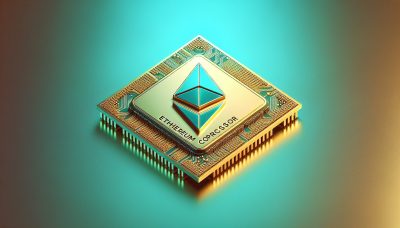EigenLayer restaking empowers security of privacy-focused rollup Fhenix
The restaking mechanism will provide quick security checks for Fhenix rollup infrastructure.

Share this article
Fhenix and EigenLayer have unveiled a collaborative effort to develop FHE-based coprocessors, a move set to revolutionize on-chain confidentiality on the Ethereum platform. These coprocessors, secured by Fhenix’s optimistic FHE rollup infrastructure and EigenLayer’s restaking mechanism, aim to delegate sensitive data computations to a specialized processor, thereby boosting efficiency without compromising security.
The FHE coprocessors are a response to the challenge of processing large encrypted data sets on Ethereum, offering a solution that maintains on-chain performance.
“FHE coprocessors represent a significant leap forward when it comes to scaling on-chain FHE,” stated Guy Itzhaki, CEO of Fhenix. “It basically provides a more efficient way to process encrypted data without revealing its contents.”
The architecture of these coprocessors is designed to be lightweight and stateless, receiving inputs directly from the host chain or user calls. This design allows for idle states until needed, optimizing performance with leveled FHE schemes.

Guy Zyskind, founder of Fhenix, emphasized the importance of sophisticated cryptography for blockchain applications, noting that “thanks to FHE coprocessors, what was once deemed impossible is now not only feasible but also extremely scalable.”
EigenLayer’s contribution to this partnership lies in its ability to fast-track transactions by providing cryptoeconomic guarantees on the correctness of FHE rollup executions. This system enables immediate confirmations for fraud proofs, eliminating the typical dispute period and enhancing the scalability of on-chain FHE.
“With EigenLayer operators providing the necessary fraud proofs, developers that utilize Fhenix are free to build powerful applications on a bedrock of secure and computationally efficient data,” concludes Sreeram Kannan, founder of EigenLayer.
